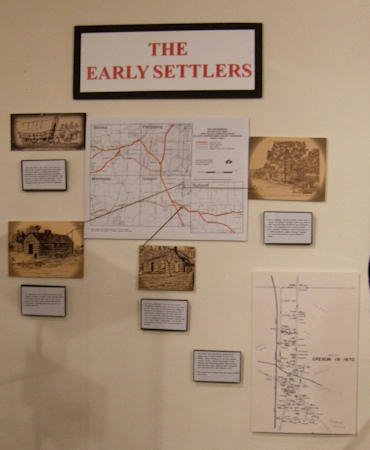 LEAD TRAIL
LEAD TRAIL
Early trails, often based on Indian trails, became stagecoach and mail routes. As the lead industry in southwestern Wisconsin expanded in the 1830’s following the Blackhawk War, trails were developed over the highland ridges eastward across to Milwaukee and Racine. Two of these Lead Trails, which passed through our area, influenced the development of our early settlements. The lead ore was transported by canvas covered wagons pulled by teams of 4 to 8 oxen.
EARLY SETTLERS (1840’s)
The first settlement in the area can be attributed to Bartley Runey who built a log cabin in 1841 just south of the present day Village of Oregon at the junction of Union Road and Old Stage Road, located along the “Old Lead Trail.” The tavern that he established there became a favorite stopping place for teamsters hauling lead from Mineral Point to Milwaukee. It was also located along the mail route from Janesville to Madison.
Robert Thomson, the first settler in what was to become the Village of Oregon, built a log cabin in 1842 along the banks of what is now Thompson’s Creek, near Janesville and S. Perry Parkway. A large Victorian farmhouse, built on the property in 1889 by Robert’s nephew, George Thomson, has since been moved to a site outside the village.
C.P. Mosely was one of the first settlers in the Village of Oregon. He built a part log, part frame house and tavern in 1843 near the site of the present day water tower on Janesville Street. It served as a place for religious and business meetings for the early settlers and became the nucleus of the central village area. It was later purchased by I.M. Bennett and operated as a country general store and tavern. The initial meetings organizing the Presbyterian Church were held there.
